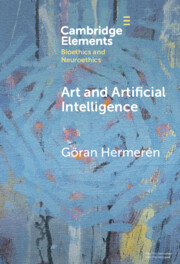Element contents
Art and Artificial Intelligence
Published online by Cambridge University Press: 04 April 2024
Summary
- Type
- Element
- Information
- Online ISBN: 9781009431798Publisher: Cambridge University PressPrint publication: 02 May 2024
References
- 8
- Cited by

